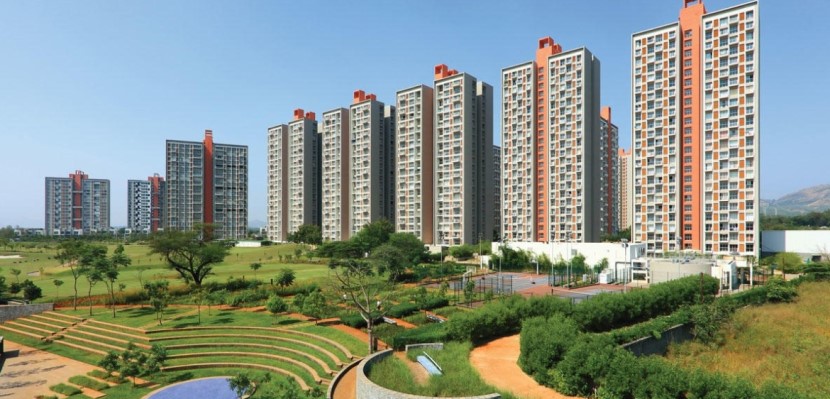Commercial real estate has long been an excellent wealth-building asset for investors looking for stable income, long-term appreciation, and portfolio diversification. Still, the requirement for quality commercial properties continues unabated in India’s leading metros, particularly vibrant markets like Pune, with increasing urbanization, business growth, and expansion of organized commercial areas. For investors associated with Pune Realty or exploring opportunities in emerging commercial hubs, understanding the right investment strategies will be critical to maximizing returns over the long term.
This comprehensive guide covers the best commercial property investment strategies smart investors follow in building sustainable, long-term wealth.
- Focus on High-Growth Micro-Markets
The location of a commercial property remains the prime factor that determines the long-term returns on it. Apart from targeting prime cities, the modern-day investor looks at micro-markets with high growth indicators, such as:
Upcoming IT corridors
New metro and infrastructure development zones
SEZs and industrial belts
Rapidly emerging commercial clusters along highways
Cities like Pune have Baner, Balewadi High Street, Hinjawadi Phase 1 & 2, Kharadi, Viman Nagar, and Magarpatta as micro-markets that have shown exceptional rental demand and appreciation. For this reason, Pune Realty professionals recommend these areas because they attract stable corporate tenants and young working populations.
Indeed, such areas have consistently outperformed others in terms of both rental yield and long-term capital growth.
- Invest in Grade A Commercial Spaces
Grade ‘A’ commercial buildings are the most sought after for multinationals and start-ups, be it high-rise office towers, IT parks, co-working centers, or business plazas. Investors who purchase Grade A commercial spaces enjoy:
Higher rental income
Better tenant quality
Longer lease commitments
Low vacancy rates
Strong capital appreciation
There has been a steep rise in demand for Grade A offices in Pune, Bengaluru, Gurugram, and Hyderabad due to rapid expansion of IT, consulting, and fintech industries. Pune Realty experts often say that Grade A spaces yield 2-3 per cent higher rentals when compared to Grade B and C properties.
Long-term Strategy: Invest primarily in modern commercial buildings fitted with high-class facilities such as high-speed elevators, adequate parking, energy-efficient design, and modern security access.
- Focus on Tenant Quality and Stability
A successful commercial investment isn’t all about location or infrastructure; the profile of a tenant plays an equally important role. A reliable tenant ensures:
On-time rental payments
Long-term lease agreements
Reduced maintenance or vacancy costs
Increased property valuation
Ideal tenants for commercial properties include:
IT & software companies
Banks and NBFCs
Healthcare service providers
Retail chains
Coworking operators
Government institutions
For clients of Pune Realty, who look towards long-term investment, a property tenanted by renowned brands like TCS, Infosys, Wipro, HDFC Bank, or Decathlon yields robust and sustainable returns.
Strategy: Always check the tenant’s financial strength, business stability, lease duration, and brand reputation before sealing the deal.
- Understand Lease Structures and Agreements
Commercial real estate returns depend a great deal on lease agreements. Savvy investors will zero in on leases offering:
Long tenures (5–9 years)
Lock-in periods (minimum 3 years)
Built-in rental escalations (commonly 5–7% per year)
Well-defined maintenance responsibilities
Exit clauses and penalties
A strong lease structure doesn’t just stabilize income; it also adds to the asset’s market value when reselling.
Investor Tip: Consider commercial properties that feature NNN, or triple net leases, whereby the tenant pays for maintenance, insurance, and property tax, maximizing net returns.
- Diversify Across Commercial Asset Classes
Commercial property is not confined to office spaces. Strategic diversification shields your portfolio from market shocks and improves long-term returns. Some smart diversification options include:
Office Spaces
High demand from IT/ITES, startups, and service companies. It offers stable and long-term rents.
Retail Spaces
Ideal for supermarkets, brand outlets, cafes, restaurants, and showrooms. Yields a higher rent but may carry slightly more risk.
Industrial & Warehousing
Exponentially growing due to e-commerce and manufacturing expansion; it features long-term leases and low maintenance.
Co-working spaces
High demand due to the shift in hybrid working culture; attractive for short-term rentals and flexible leasing.
Commercial Plots
Excellent for long-term capital appreciation, particularly in growing metropolitan areas.
Diversification across such segments reduces the risk exposure and also opens multiple channels for revenues.
- Take advantage of REITs for safer commercial investment
Real Estate Investment Trusts, or REITs, grant investors the ability to invest in huge commercial portfolios without directly acquiring the actual properties. REITs offer:
Low entry cost
High liquidity
Regular dividend income
Lower risk because of portfolio diversification
For low-risk exposure to commercial real estate, REITs such as Embassy REIT, Mindspace REIT, and Brookfield India REIT offer stable alternatives with regular returns to the investors in Pune Realty.
- Assess Market Cycles and Timing
Commercial markets operate in cycles: expansion, peak, contraction, and recovery. Savvy investors track:
Office absorption rates
Commercial stock
Vacancy percentages
Corporate hiring trends
Economic indicators
Example: When corporate hiring and startup growth are happening across firms, commercial demand shoots up along with rental values. IT hiring, expansion of manufacturing units, and upcoming new business hubs across the city have seen very good commercial demand in Pune.
Strategy: Buy during market dips or during stagnation phases to maximize your returns during recovery.
- Adopt Long-Term Rental Yield Strategy
For long-term returns, focus on properties offering 6–9% annual rental yield, especially in cities like Pune, Hyderabad, and Bengaluru. Over time, yields grow due to the following:
Regular rental escalations
Demand for office and retail spaces
Improved locality infrastructure Property appreciation This combination provides considerable passive income, with its asset base growing simultaneously.
9. Consider Future Infrastructure Development
The appreciation in commercial properties is greatly influenced by forthcoming infrastructure projects. Investors should keep tabs on:
Metro lines
New highways and flyovers
IT parks & SEZ approvals
Airport expansions
Commercial zones in development plans
For example, the expansion of Metro Line in Pune, Ring Road, and the International Airport at Purandar will increase commercial demand in nearby areas manifold.Experts in Pune Realty repeatedly assert that one should invest early near such projects for maximum appreciation.
Conclusion
Commercial real estate remains one of the most rewarding long-term investments when approached with the right strategy. Whether you are directly investing in Grade A office spaces, diversifying into retail and warehousing, or choosing REITs, the key is in detailed research, quality of tenants, and how the market cycles are judged.
For investors tracking Pune Realty insights, the rapidly changing commercial landscape of Pune offers immense opportunities for regular rental income, continued appreciation, and long-term wealth creation.




